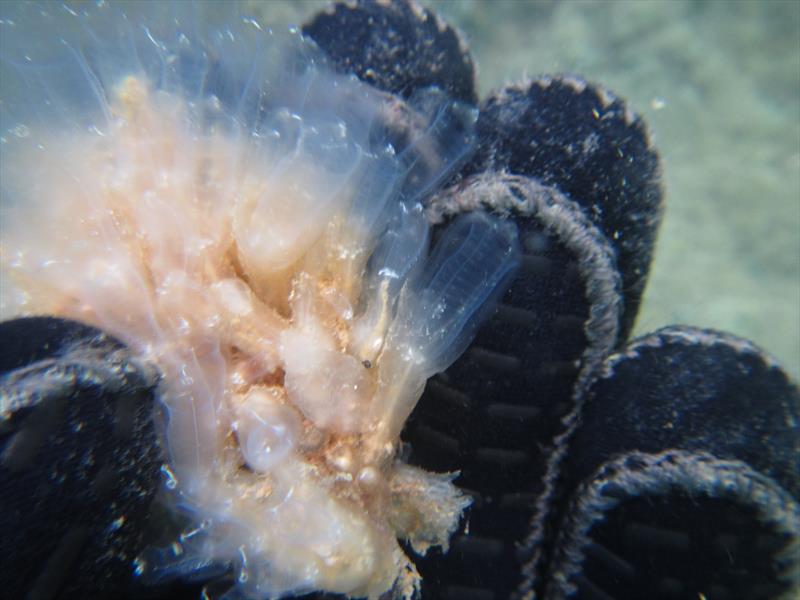
Marine invader found in Great Barrier Island waters
by Samantha Happy 26 Aug 2019 21:34 NZST
26 August 2019

Clavelina oblonga, a type of sea squirt, has been found at Great Barrier Island. It may look pretty but could become a serious marine pest for the country © Samantha Happy
Among the coastal waters of Smokehouse Bay on Great Barrier Island, Auckland Council has discovered a new marine species attempting to make the island their home. It is the first known record of this species in New Zealand.
Clavelina oblonga, a type of sea squirt, may look pretty but could become a serious marine pest for the country and for our biosecurity officers to deal with.
Auckland Council Senior Marine Biosecurity Advisor, Samantha Happy says the council is working closely with Biosecurity New Zealand (the biosecurity division of MPI) to find out more about the sea squirt and how widespread it may be.
“It is difficult to know how a species will interact with our environment when it has not been observed here before. Learning about the biology of introduced species is crucial in order to achieve successful management.”
The sea squirt was discovered in May through Auckland Council’s routine marine pest surveillance of the island’s waters. The find was reported to Biosecurity New Zealand, and samples sent to the Marine Invasive Taxonomical Species laboratory at NIWA for analysis.
It is believed the sea squirt was introduced to the area during the past summer, sometime after the previous round of routine surveillance was carried out in December 2018.
It appears to have started to establish itself throughout the bay in a very short timeframe. However, the species is less visible in cold water and may become more obvious in the coming months as water temperatures rise.
Biosecurity New Zealand will continue building an understanding of the potential impact, where it actually is and options for managing it in the future.
This sea squirt is native to the southern Atlantic coast of North America and the Caribbean Sea, but has also invaded Brazil, Cape Verde, and areas of the Mediterranean.
Humans often inadvertently move these pests around through a process known as ‘biofouling’, where the pests grow on boat hulls then hitchhike to new locations.
“We are asking for boat owners to maintain their boat hulls and avoid cleaning their boats in the water as this, unfortunately, helps to spread these pests further and poses a definite risk to the local marine life.
"Boat owners should also know that Smokehouse Bay is an area where in-water cleaning is barred,” explains Happy.
The council has recently consulted Aucklanders on ‘Better ways to stop marine pests’; the issue of how marine pests can spread around (known as marine pathway management), and potential options to address the issue.
The feedback results will be made available soon. This is an inter-regional initiative across the four northernmost regions with support from Biosecurity New Zealand.